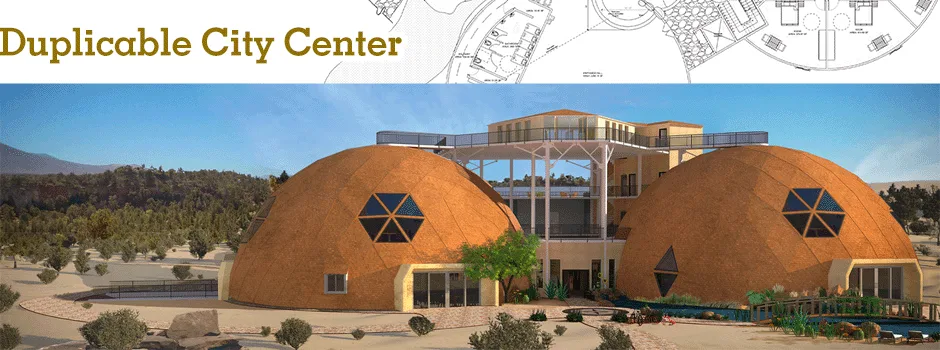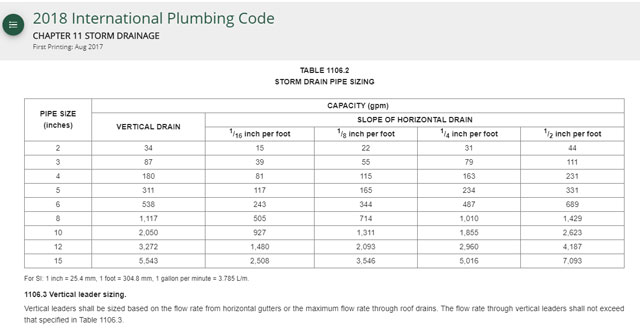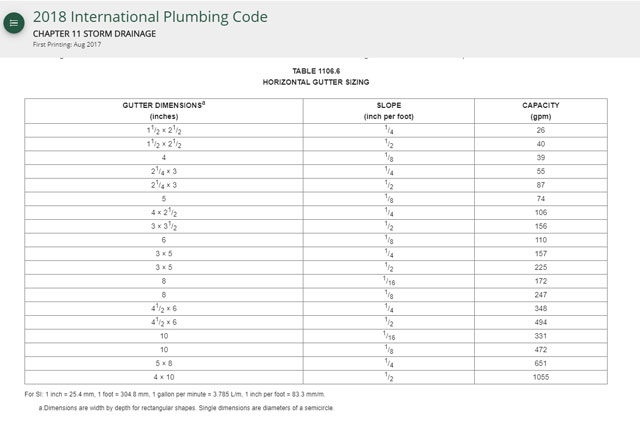
Duplicable City Center Water Catchment
Welcome to the Duplicable City Center water catchment hub. As part of our global transformation approach to Highest Good housing, we are using this page to share the complete design, construction, storage, and ongoing maintenance and upkeep details of the Duplicable City Center water catchment system.
PAGE STILL DEVELOPING – BOOKMARK IT AND CHECK BACK FREQUENTLY TO WATCH IT EVOLVE
For easy reference, the page is divided into the following sections:
- What is Rainwater Catchment
- Why Open Source Rainwater Catchment
- Ways to Contribute and Consultants
- Rainwater Catchment Details
- Resources
- Summary
- FAQ
NOTE: THIS PAGE IS NOT CONSIDERED BY US TO BE A COMPLETE AND USABLE TUTORIAL UNTIL
WE FINISH OUR OWN CONSTRUCTION OF THIS COMPONENT, CONFIRM ALL THE DETAILS, AND ADD
TO THIS PAGE ALL THE RELATED VIDEOS, EXPERIENCE, AND OTHER UPDATES FROM THAT BUILD.
IN THE MEANTIME, YOU CAN HELP US COMPLETE IT ALL SOONER WITH THE FOLLOWING OPTIONS:
INPUT & FEEDBACK | JOIN OUR TEAM | HELP US BUY THE PROPERTY
RELATED PAGES
WAYS TO CONTRIBUTE TO EVOLVING THIS SUSTAINABILITY COMPONENT WITH US
SUGGESTIONS | CONSULTING | MEMBERSHIP | OTHER OPTIONS
CLICK THESE ICONS TO JOIN US THROUGH SOCIAL MEDIA
FOR THIS COMPONENT:
Carol Nguyen: Civil Engineer
Daniela Andrea Parada: Civil Engineering Student
Mateus Moura Barretto: Civil Engineering Student specializing in Hydraulics
Vineela Reddy Pippera Badguna: Mechanical Engineer
Yuqiao Zhang: Architectural Designer/Drafter
Zhiheng “Samson” Su: Civil Engineer
WHAT IS RAINWATER CATCHMENT
![]() Rainwater catchment, rainwater harvesting, and rainwater collection are all names for the collection and storage or rainwater. With proper filtration, this rainwater can be used for drinking and cooking. With minimal filtration it can be used for bathing, clothes washing, and dish washing. With no filtration it can be used for watering gardens and houseplants, flushing toilets, washing cars and buildings, composting, outdoor ponds and water features, fire control, etc.
Rainwater catchment, rainwater harvesting, and rainwater collection are all names for the collection and storage or rainwater. With proper filtration, this rainwater can be used for drinking and cooking. With minimal filtration it can be used for bathing, clothes washing, and dish washing. With no filtration it can be used for watering gardens and houseplants, flushing toilets, washing cars and buildings, composting, outdoor ponds and water features, fire control, etc.
WHY OPEN SOURCE RAINWATER CATCHMENT
![]() The benefits of harvesting rainwater are many and we’d like to help more people experience these benefits. Collecting and using rainwater reduces municipal water needs and peak demands (demands on ground water), reduces costs/water bills, and is good for the environment. Proper harvesting also reduces flooding and erosion.
The benefits of harvesting rainwater are many and we’d like to help more people experience these benefits. Collecting and using rainwater reduces municipal water needs and peak demands (demands on ground water), reduces costs/water bills, and is good for the environment. Proper harvesting also reduces flooding and erosion.
Open sourcing the rainwater catchment specifics for the Duplicable City Center is primarily for replication. It is also to help with open source collaborative improvement of the designs, as an example of the process and needs for other similar-sized structures, and to share here additional specifics like purchasing and installation details, the maintenance and upkeep process, etc.
DUPLICABLE CITY CENTER RAINWATER CATCHMENT DETAILS
 The Duplicable City Center will be a totally sustainable and eco-friendly building. One of the tools that we can use to make that possible is implementing a system of rainwater harvesting and reusing water as much as possible. We discuss the catchment our harvesting and storage details here with the following sections:
The Duplicable City Center will be a totally sustainable and eco-friendly building. One of the tools that we can use to make that possible is implementing a system of rainwater harvesting and reusing water as much as possible. We discuss the catchment our harvesting and storage details here with the following sections:
- Zone Identification
- Precipitation and Design Criteria
- 1000-Year Event Water Catchment Volume Details
- Rainwater Drainage System Design & Pipe Sizing
- Ground-gutter System
- Annual Water Harvesting Estimations
- Rainwater Storage
- Cost Analysis
- Open Source Content Coming Later
ZONE IDENTIFICATION
Water will be collected off of the entire Duplicable City Center. Water catchment for this area has been calculated using the following color coordinated zones:

City Center Rainwater Harvesting Zones
PRECIPITATION AND DESIGN CRITERIA
The data used for rainwater collection and rainwater drainage for the Duplicable City Center is from the NOAA’s National Weather Service website here. By entering the location of a project you are able to get the rainfall data for that location. In order to be prepared for the most severe conditions, conditions that are occurring more frequently now due to rapid climate change, we used the most intense 1000-year 5-minute storm for our designs. This was a rainfall of 1.16 inch per each 5 minutes. Designing for this means our downspouts and gutters can handle any storm with this much rainfall or less.
MAXIMUM WATER VOLUME DETAILS
Next we calculated the rainwater harvesting volume. This is done by multiplying our most severe rainfall condition identified above (1.16 inch/5 minutes) by the area of each of our catchment zones. By multiplying the square footage of the zones by the precipitation frequency, we get the intensity in gallons-per-minute shown below. Total per-minute water falling on all zones for a 1000-year storm would be 2,175 gallons per minute. This is what the drainage systems are designed to handle.

1000-yr Event (1.16 inch/5 min) Rainwater Collection by Zone – Click to open the calculations spreadsheet
RAINWATER DRAINAGE SYSTEM DESIGN & PIPE SIZING
The building code we adopt to design the system is IPC 2018 and IBC 2018.
Applying the above codes to our structure’s zones, gutter sizes and slope range are shown as follows:

Duplicable City Center Gutter Sizes and Slope Ranges by Zone
The maximum rainwater harvesting capacity of the Duplicable City Center will be 2175.08 gallon/min. Zone D-1 and D-2 will not use gutter and downspout system, instead collecting the free-flow rainwater with the ground trench by the perimeter of the footprint. Other zones will collect the rainwater with different types of gutters and downspouts and then drain those into the ground trenches.
GROUND-GUTTER SYSTEM
Coming…
CHOOSING THE SIZE AND TYPE OF GUTTERS
The water flowing inside gutters is considered as an open channel flow. The Manning Equation is used to calculate the best size and material for the gutters. This equation is a function of the channel velocity, flow area and channel slope. The following table shows Manning’s Roughness Coefficient:

The material with the best cost x benefit ratio is PVC because it is light, durable and affordable. The roughness (friction loss) coefficient of the PVC is 150. By applying the Manning Equation in our project we conclude that the best solution is use 6″ k-style seamless PVC guttering.
FIRST FLUSH OF WATER
For health reasons, it is important to address the first flush of water. When it rains, water slowly builds up in the roof gutter system before it exits through the downpipe. The first flush of water from the roof can contain amounts of bacteria from decomposed insects, lizards, bird and animal droppings and concentrated tannic acid. It may also contain sediments, water borne heavy metals and chemical residues, all of which are undesirable elements to have in a water storage system.
There are many systems to flush off the first flush of water, but one of the smartest and most economical systems to use is a ball and seat system. This is a simple automatic system that does not rely on mechanical parts or manual intervention. As the water level in the diverter chamber rises, the ball floats, and once the chamber is full, the ball rests on a seat inside the diverter chamber preventing any further water entering the diverter. The subsequent flow of water is then automatically directed along the pipe system to the tank. Here’s what this looks like:

ANNUAL WATER HARVESTING ESTIMATIONS
The total area for all of the Duplicable City Center zones can be calculated by adding all the areas in cells C29-51 on the “ZoneAndRainfallCalculations” tab of the City Center Rainwater Catchment Calculations spreadsheet. The sum total of all these zones is 15,040 ft2. For the purpose of water availability for irrigation and other uses, we used a conservative (for our location) 10-inch annual rainfall and applied the formula for calculating water harvesting (catchment area x rainfall x runoff). This yielded the following conservative estimate: (15,040 ft2) X (.833 ft) X (7.48 gal/ ft3) = 93,712 gallons of water harvested per year from this structure.
TOTAL WATER CATCHMENT FOR THE DUPLICABLE CITY CENTER
93,712 GALLONS OF WATER
RAINWATER STORAGE
If the goal is to store enough water to eliminate the need for external water sources, the accepted volume is sufficient storage capacity to carry the household/structure through extended periods of low rainfall. A three-month supply of water, or one-fourth of the annual yield of the catchment area, is generally adequate in areas where the rainfall is distributed fairly evenly over the course of the year.
The figure below illustrates this idea. For example, if you have determined your annual domestic water needs to be 40,000 gallons (and, most importantly, you have enough catchment area and annual precipitation to supply this amount of water), then you should design and build a cistern or other closed-water storage options with a 10,000-gallon storage capacity. If your water storage is open, you must account for evaporation and this will require more storage.

In our case, we’ll be using all this water for irrigation and wouldn’t be able to capture enough water to meet our needs, so we are instead seeking to capture and store as much as we can. To calculate how much this will be, we took the average annual rainfall for our location (13.6 ~ 15 inches/year) and used the high-end number with the formula for calculating water harvesting (catchment area x rainfall x runoff) to calculate maximum rainfall collection:
(15,040 ft2) X (1.25 ft) X (7.48 gal/ ft3) = 140,624 gallons
We then added our calculated greywater production for the City Center:
Coming…
And subtracted our estimated minimum water use during the rainiest periods, so as to never over-fill our storage and greywater processing pond:
Coming…
This allowed us to size the greywater and rainwater storage pond for its maximum projected capacity.
PROJECTED WATER STORAGE NEEDS (INCLUDING GREYWATER) FOR THE DUPLICABLE CITY CENTER
COMING – XXXX GALLONS OF WATER
RAINWATER CATCHMENT AND STORAGE COST ANALYSIS
Coming…
OPEN SOURCE CONTENT TO BE ADDED LATER
 Once on the property, One Community will open source project-launch blueprint the complete process of installing and maintaining our rainwater catchment infrastructure. We will do this so that people with zero prior knowledge can install a similar system and integrate it into their own project or as part of the One Community complete open source self-sufficient teacher/demonstration community, village, or city model. Upcoming resources will include:
Once on the property, One Community will open source project-launch blueprint the complete process of installing and maintaining our rainwater catchment infrastructure. We will do this so that people with zero prior knowledge can install a similar system and integrate it into their own project or as part of the One Community complete open source self-sufficient teacher/demonstration community, village, or city model. Upcoming resources will include:
- Purchase orders for all components
- Installation of all components
- Maintenance of all components
RESOURCES
- NOAA’s National Weather Service website
- Rainwater Cisterns: Design, Construction, and Water Treatment
- State-by-state listing of rainwater harvesting/catchment laws
- American Rainwater Catchment Systems Association (ARCSA)
- Article: “23 Awesome DIY Rainwater Harvesting Systems You Can Build at Home”
- Article: “10 Uses For Rain Water”
- Use this page (click here) if you have a resource you’d like to suggest be added here
SUMMARY
![]() One Community is open source project-launch blueprinting the complete process of installing and maintaining our rainwater catchment infrastructure. We will do this so that people with zero prior knowledge can install a similar system and integrate it into their own project or as part of the One Community complete open source self-sufficient teacher/demonstration community, village, or city model. When complete, this page will include all the details necessary for replication and maintenance.
One Community is open source project-launch blueprinting the complete process of installing and maintaining our rainwater catchment infrastructure. We will do this so that people with zero prior knowledge can install a similar system and integrate it into their own project or as part of the One Community complete open source self-sufficient teacher/demonstration community, village, or city model. When complete, this page will include all the details necessary for replication and maintenance.
FAQ
None yet. Use this page (click here) if you have a question you’d like answered here.
 One Community
One Community









